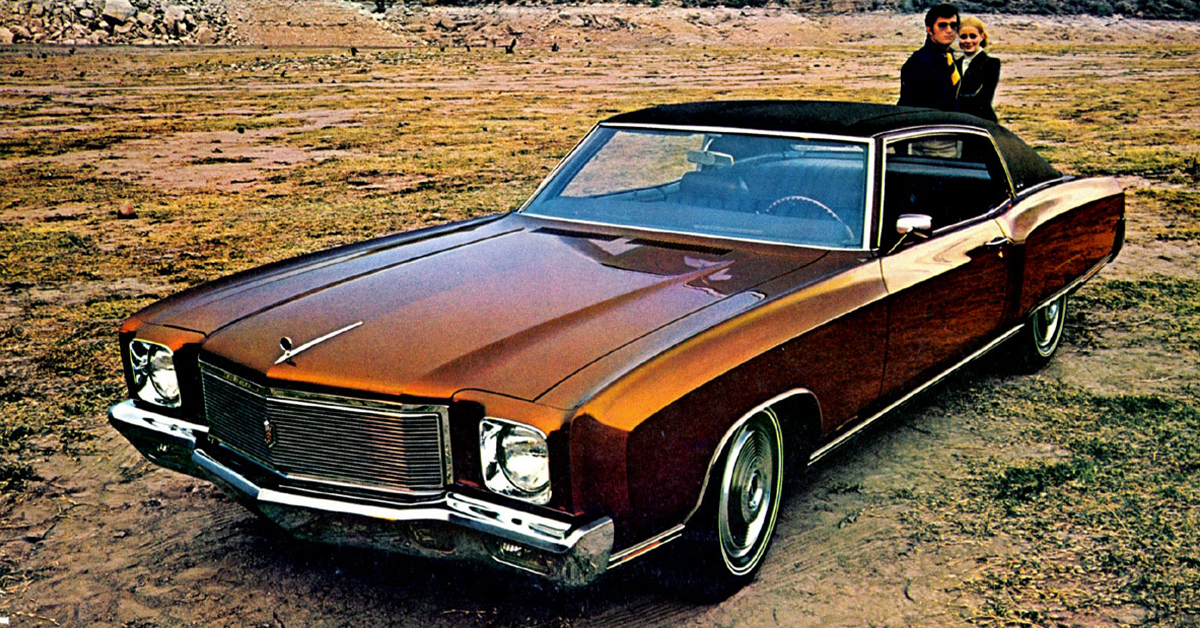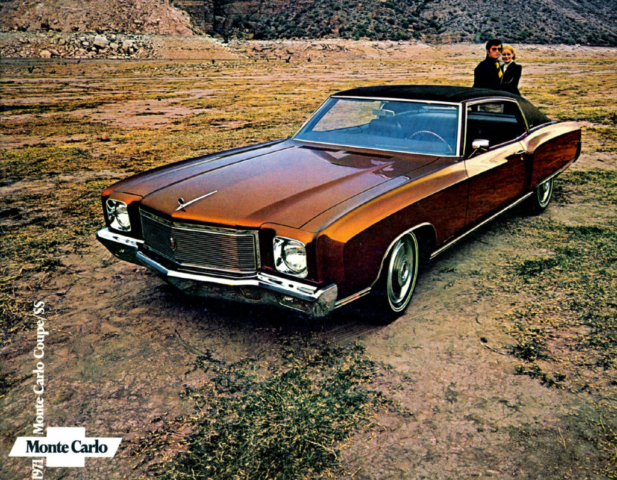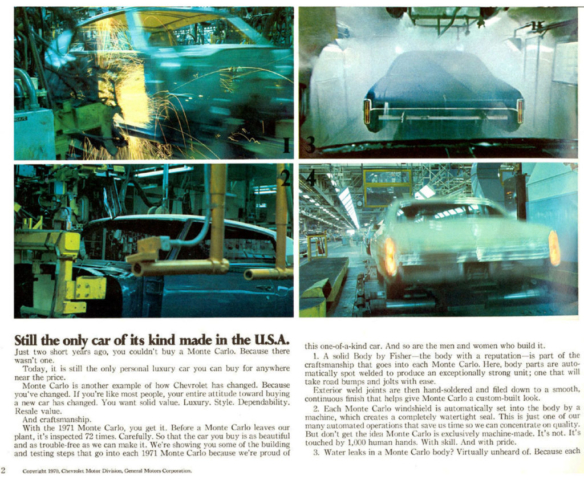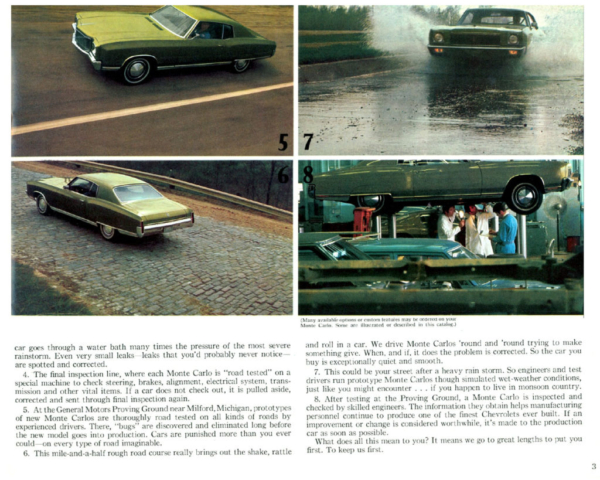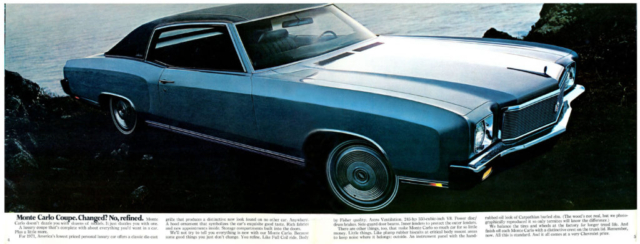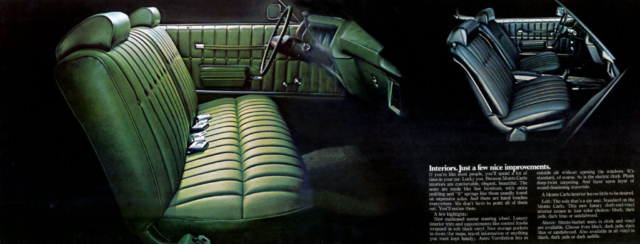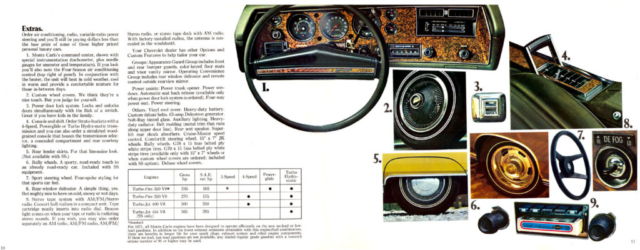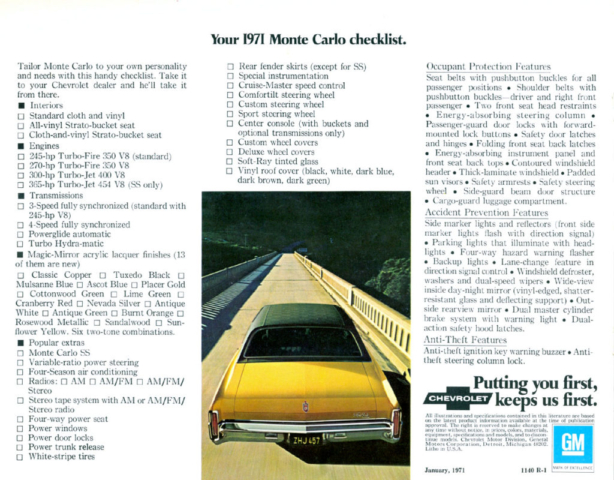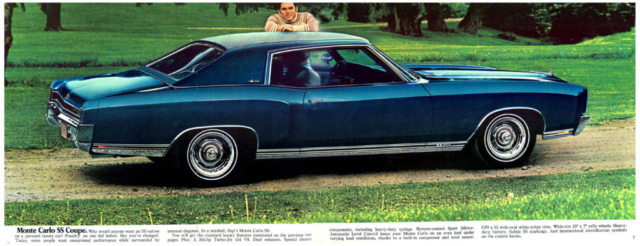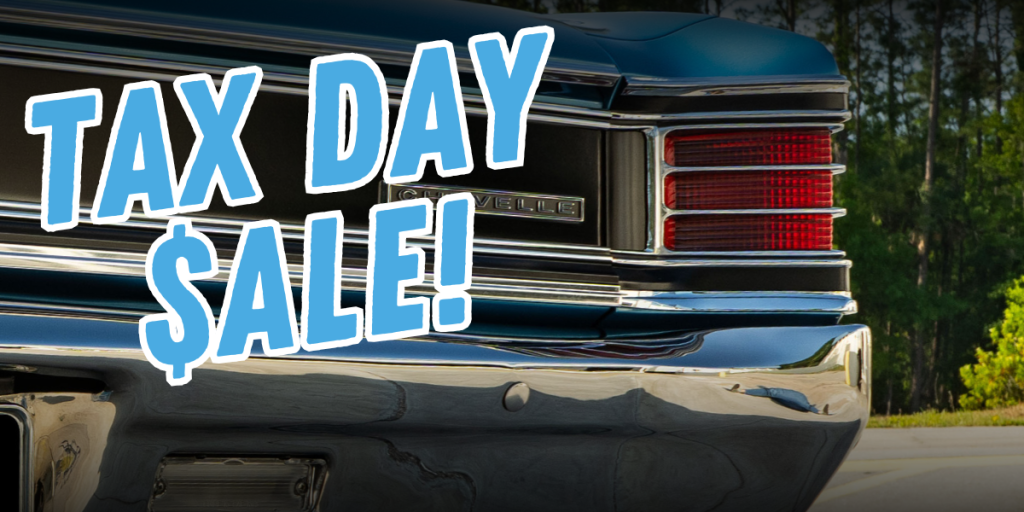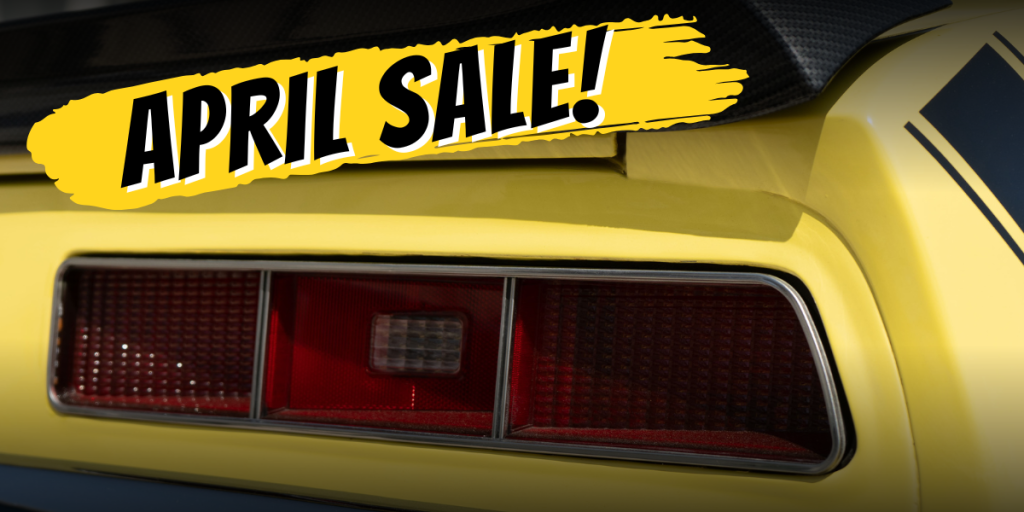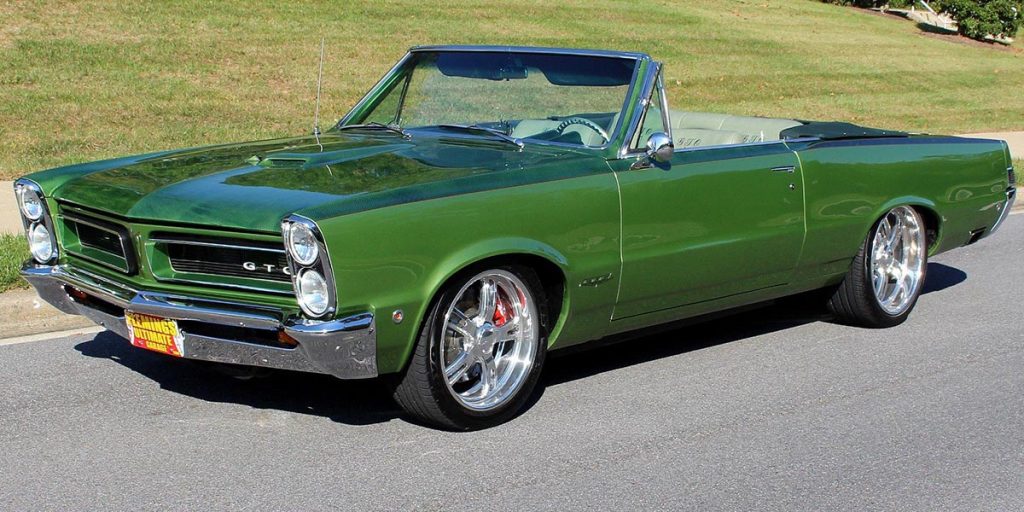The Monte Carlo returned for the 1971 model year and featured very subtle changes, most of which were cosmetic.
The headlamp bezels were now more of a rounded square shape with rectangular parking lamps up front. The grille had no horizontal dividers for the 71 model year and the openings were rectangular as opposed to the squares featured on the 1970 model year. The hood spear now included a stand-up ornament with “Chevrolet” script lettering and the grill emblem featured the year, “1971” in Roman numerals. The trunk lock keyhole had the traditional Monte Carlo crest surrounding it and the taillights now had two horizontal and one vertical chrome strip. Interior changes were even more minimal for the 1971 model year. The SuperSport model got brand new “European style knobs”, and the four-spoke steering wheel became optional. AM/FM stereo radios with 8-track tape players also became optional in 1971.
Much like the interior and exterior, the powertrain in 1971 was mostly unchanged. The biggest changes included the loss of engine options and performance due to the fuel crisis looming on the horizon.
The small-block Turbo-Fire 400 two-barrel engine was dropped from the options list and many more saw significant power loss. Compression ratios were also lowered in 1971 to allow for the use of regular leaded, low-lead, or unleaded gasoline. Engine ratings fell to 245 horsepower for the base Turbo-Fire 350 two-barrel, 270 horsepower for the Turbo-Fire 350-4V, and 300 horsepower for the Turbo-Jet 400. Surprisingly enough the SS 454 engine was raised to 365 horsepower despite the reduction in compression ratio. This minimal increase in horsepower was a result of the 454 engine using a more aggressive camshaft from the 390 horsepower 454 used in the 1970 Chevrolet Corvette and full-sized sedans.
The 1971 model year also saw the end of an era, or should we say the start of a hiatus.
At the end of the 1971 model year, we would see the discontinuation of the SS 454 package, however, the 454 V8 engine would remain optional in Monte Carlos through 1975. The reasoning behind Chevrolets’ decision to discontinue this option was that the Monte Carlo was intended to be marketed as a luxury vehicle instead of a muscle car.
Production of the 1971 Monte Carlo got off to a slow start due to a 67-day corporate-wide walkout that harmonized with the introduction of the 1971 models in September 1970.
This labor strike left dealerships with only a small shipment of 1971 model year Monte Carlos in stock until the strike was settled in mid-November 1970. Even after the strike was settled Monte Carlo production moved at a snail’s pace until reaching normal production levels in January 1971. Despite these issues, Chevrolet ended at 128,600 including the 1,919 SS models. Even more remarkable is that 12 of the 128,600 Monte Carlos were exported to Australia and converted to right-hand drive, 4 of these 12 were SuperSports.
Chevrolet was off to the races and the Monte Carlo was leading the pack.
At the same time that the Monte Carlo SS was deemed a failure in the marketplace and discontinued, Monte Carlo’s reputation as a performance car on the race track was gaining strength. With both Ford and Chrysler pulling out of factory-backed racing and the increasing switch to independent teams and sponsors, Monte Carlo was significantly favored. This was due to Chevy’s much greater availability and affordability of over-the-counter racing parts through the Chevy dealer network. This was especially the case in NASCAR where the Monte Carlo was considered the best-suited Chevrolet model for stock car racing due to its 116 in wheelbase which was only 1 in above NASCAR’s minimum requirements at that time. In addition to the wheelbase, the long-hood design of the Monte Carlo placed the engine further back in the chassis which resulted in better weight distribution. This all resulted in Monte Carlo becoming Chevy’s standard-bearer for NASCAR from 1971 to 1989.
Around 128,600 Monte Carlos were produced for the 1970 model year.
1971 Monte Carlo OEM Brochure & Ads
Model Options
Models:
- Monte Carlo
- Monte Carlo SS 454
Body Style:
- two-door hardtop
Dimensions:
- Length: 206.5 inches
- Height: 52.9 inches
- Width: 76 inches
- Wheelbase: 116 inches
Engine Options:
- 350 cubic in “Turbo-Fire” small-block V8 (standard)
- two-barrel carb
- 245 hp at 4500 rpm
- 350 cubic in “Turbo-Fire” small-block V8 (optional)
- four-barrel carb
- 270 hp at 4800 rpm
- 402 cubic in “Turbo-Jet” big-block V8 (optional)
- four-barrel carb
- 300 hp at 4800 rpm
- 454 cubic in “Turbo-Jet” big-block V8 (optional)
- four-barrel carb
- 365 hp at 4800 rpm
Available Transmissions:
- 3-speed Synchro-Mesh manual transmission (standard)
- Two-speed Powerglide automatic transmission (optional)
- Three-speed Turbo-Hydramatic (optional)
- Four-speed manual (optional)
Estimated Production Numbers:
- Sport Coupe: ~ 126,681
- SS 454: ~ 1,919
- Total Production ~ 128,600
Excludes 16,003 units listed as Canadian imports.

